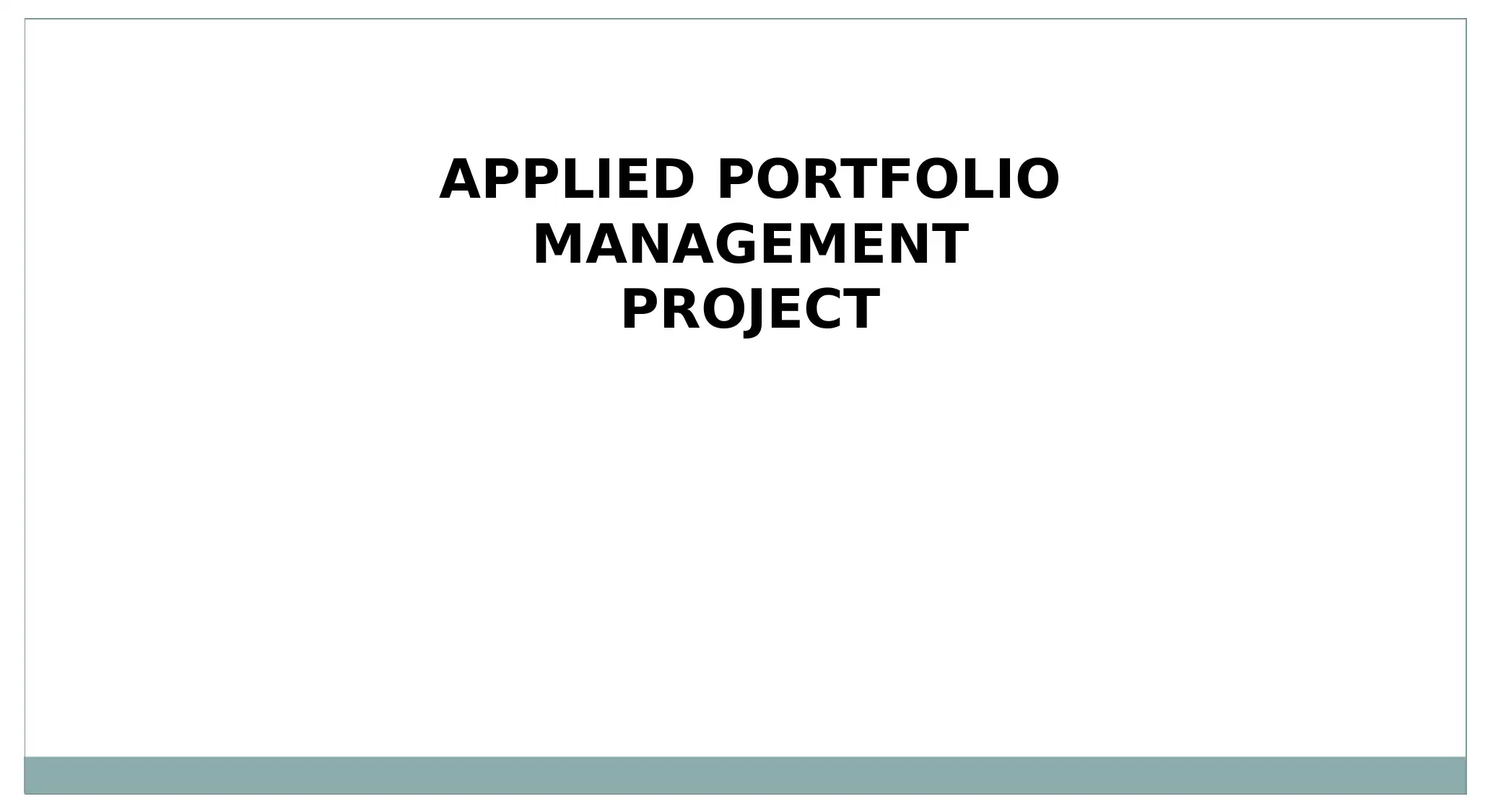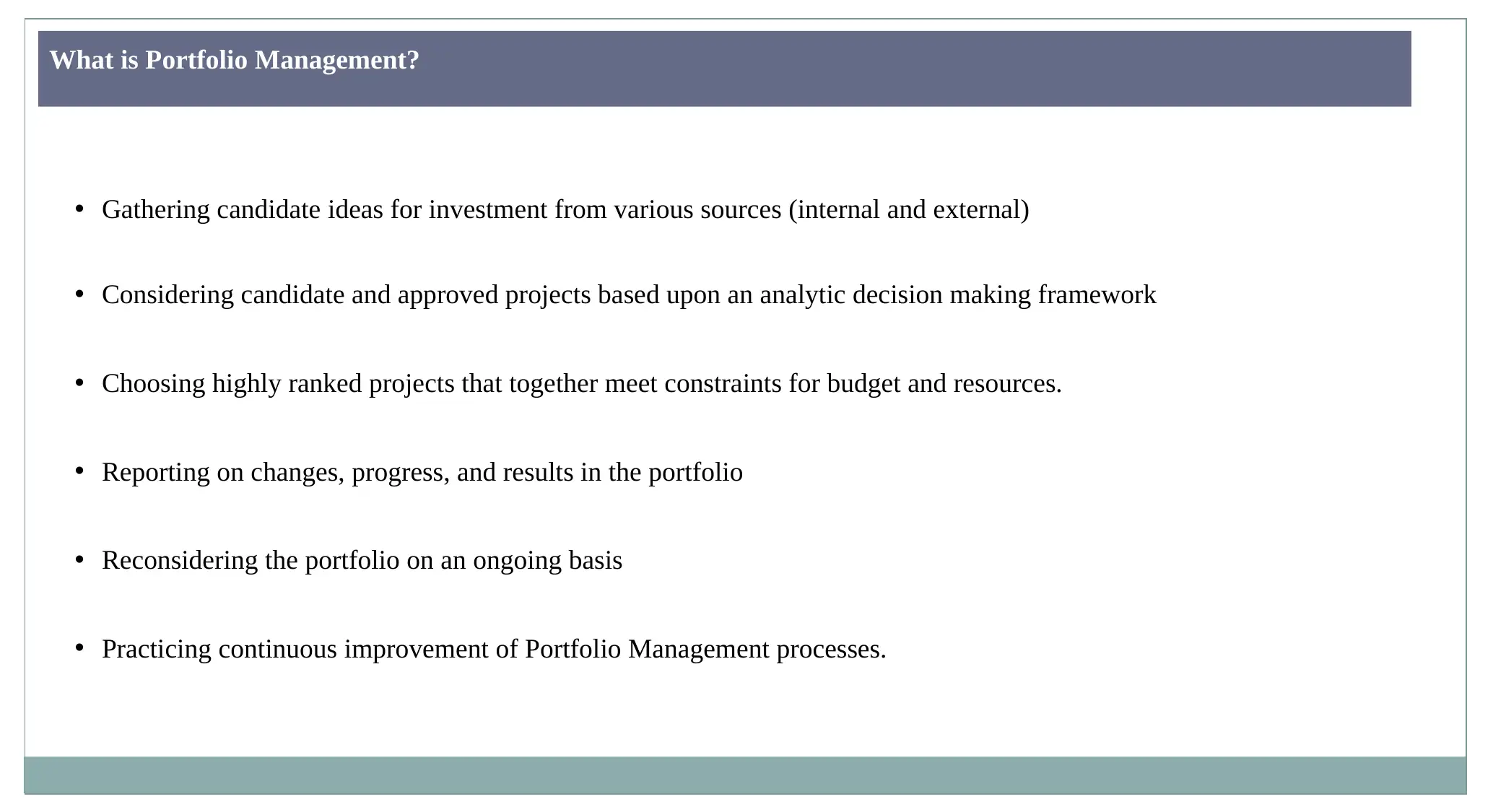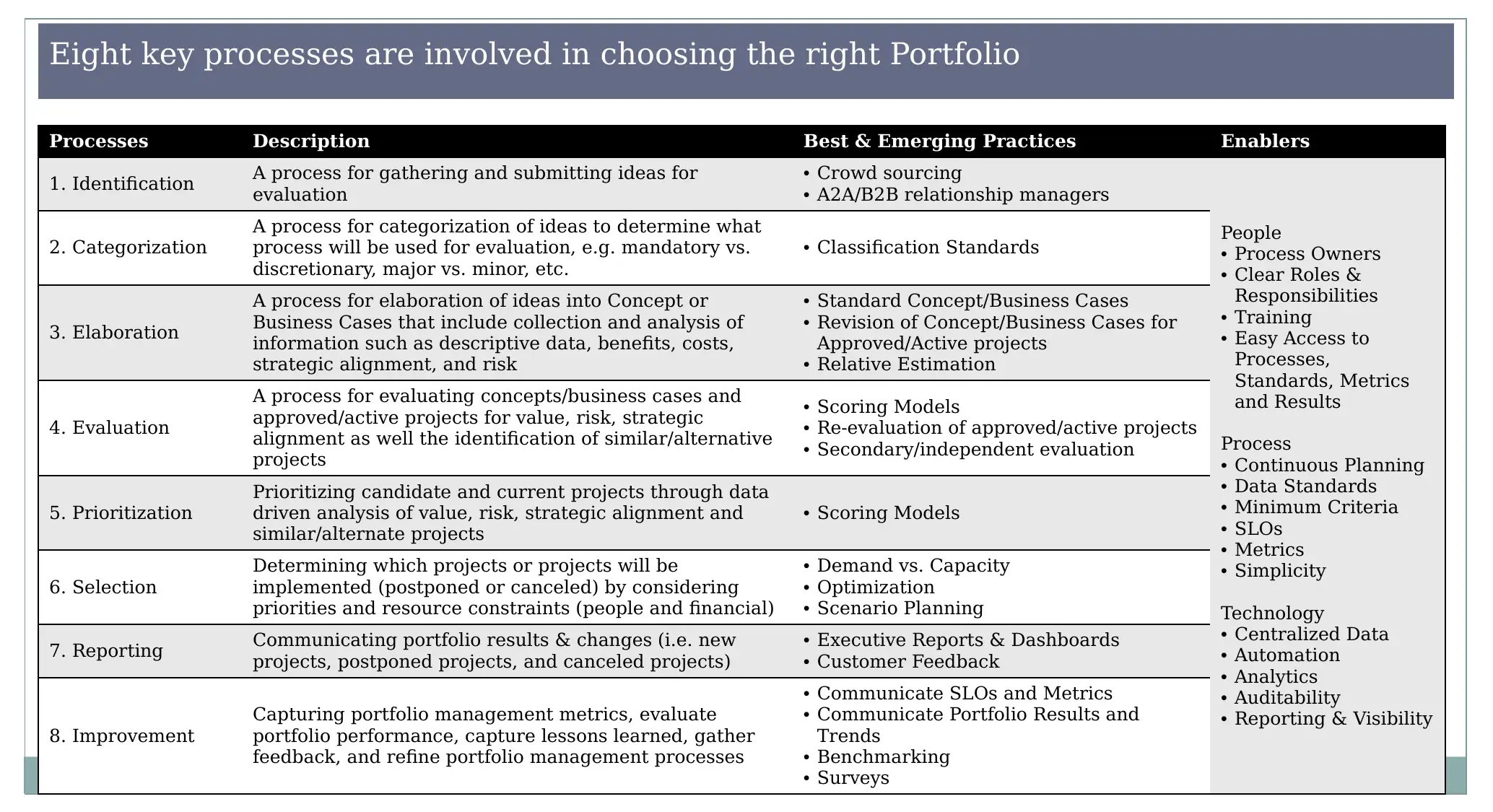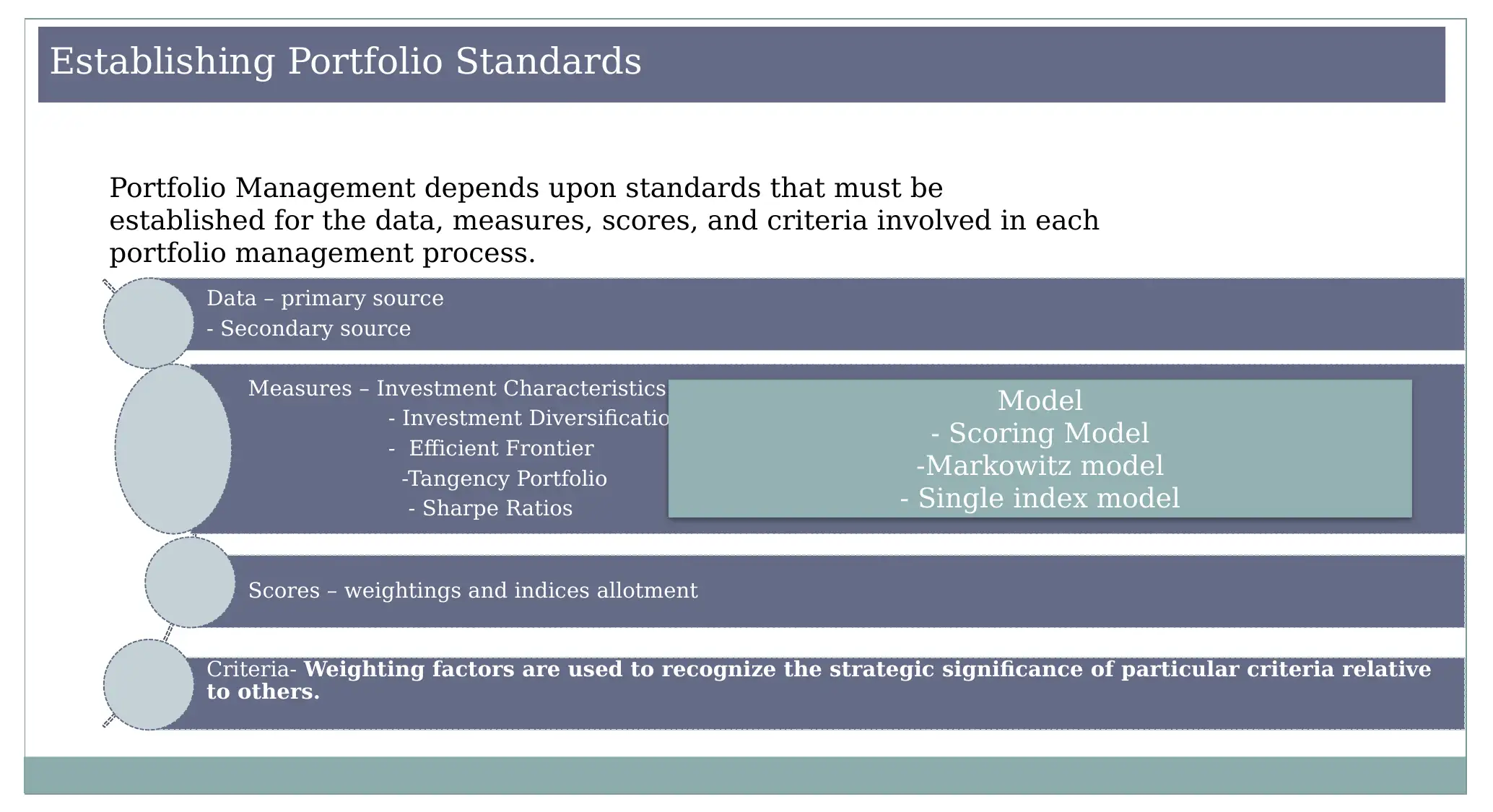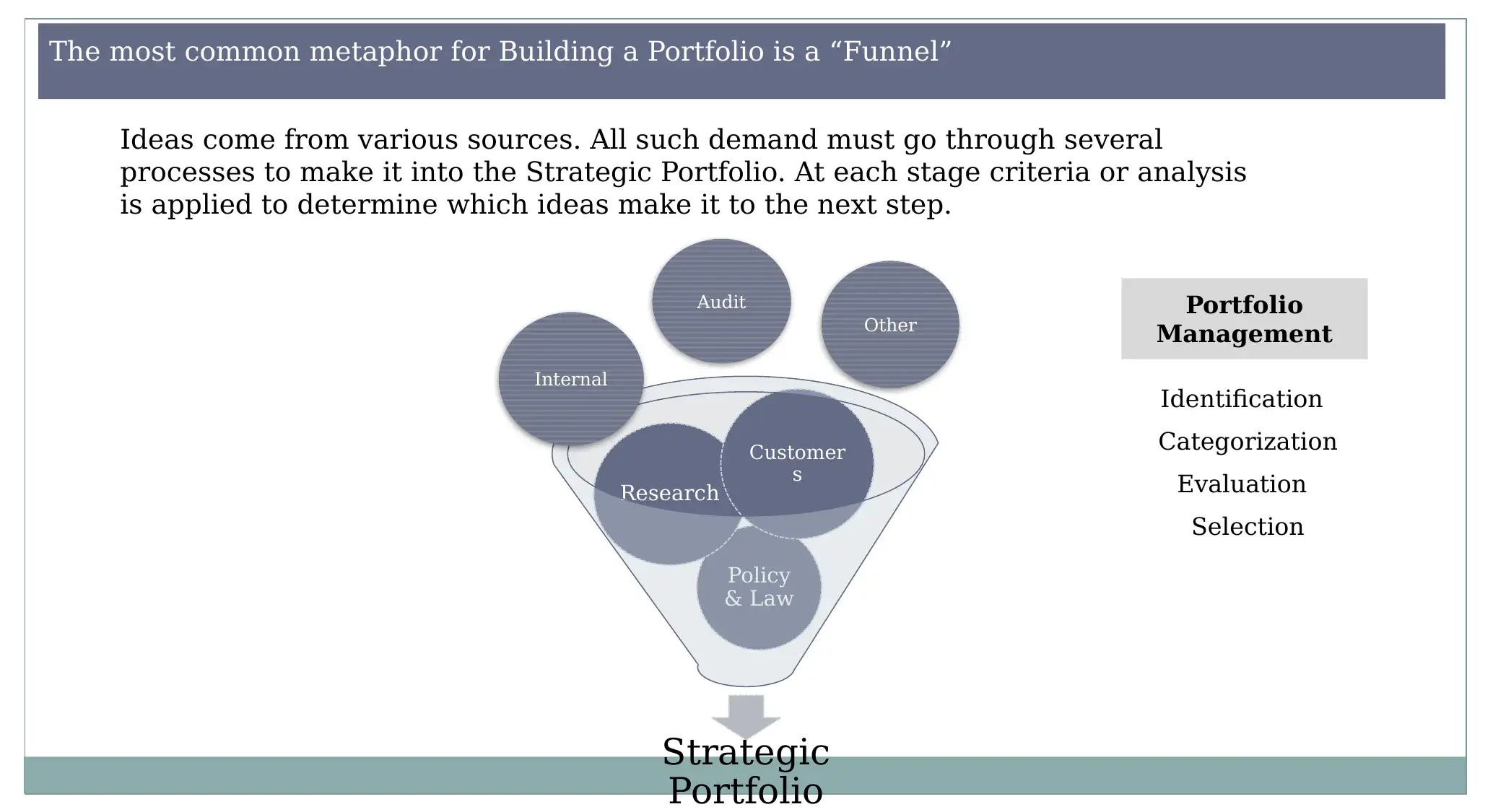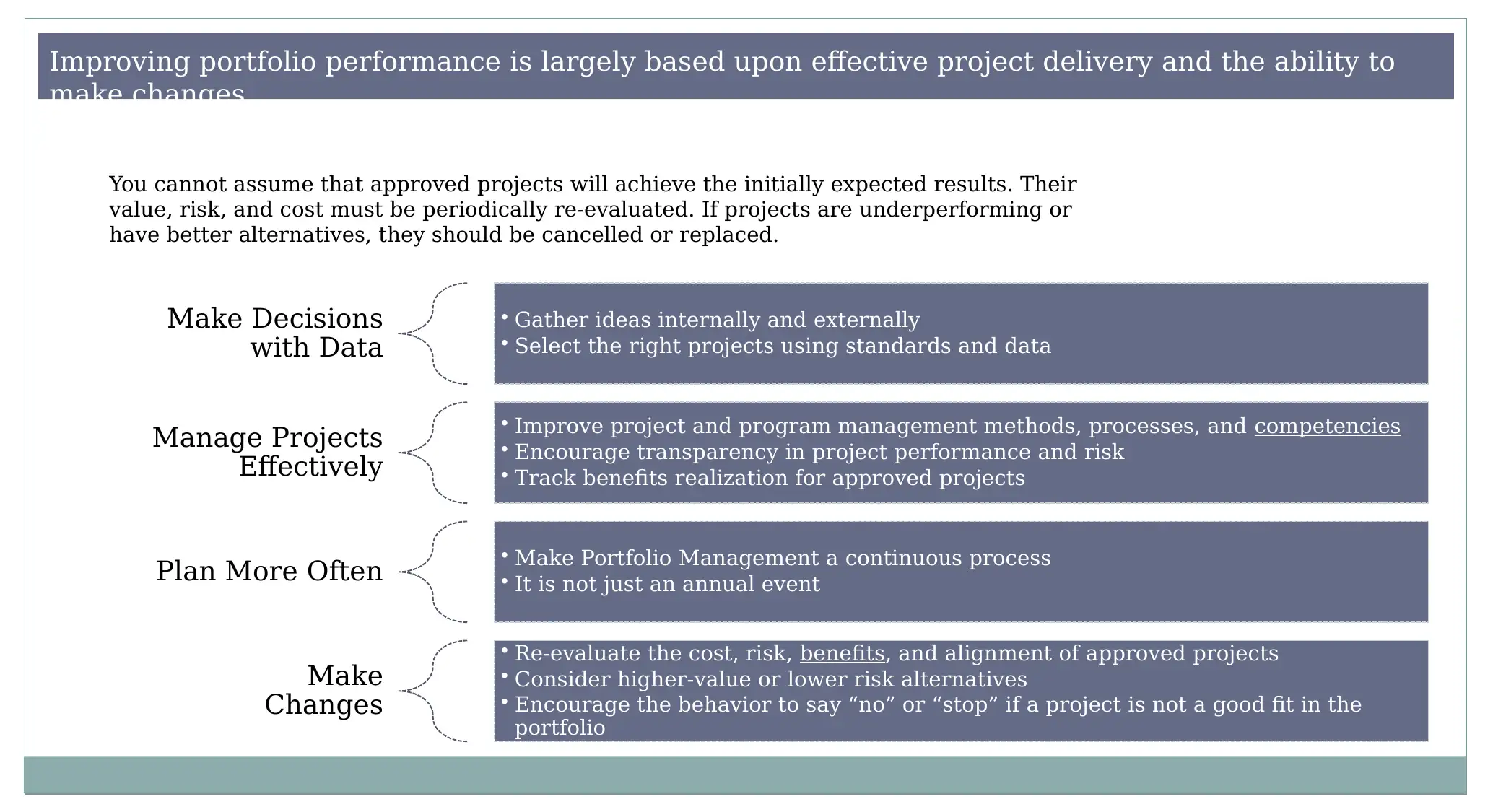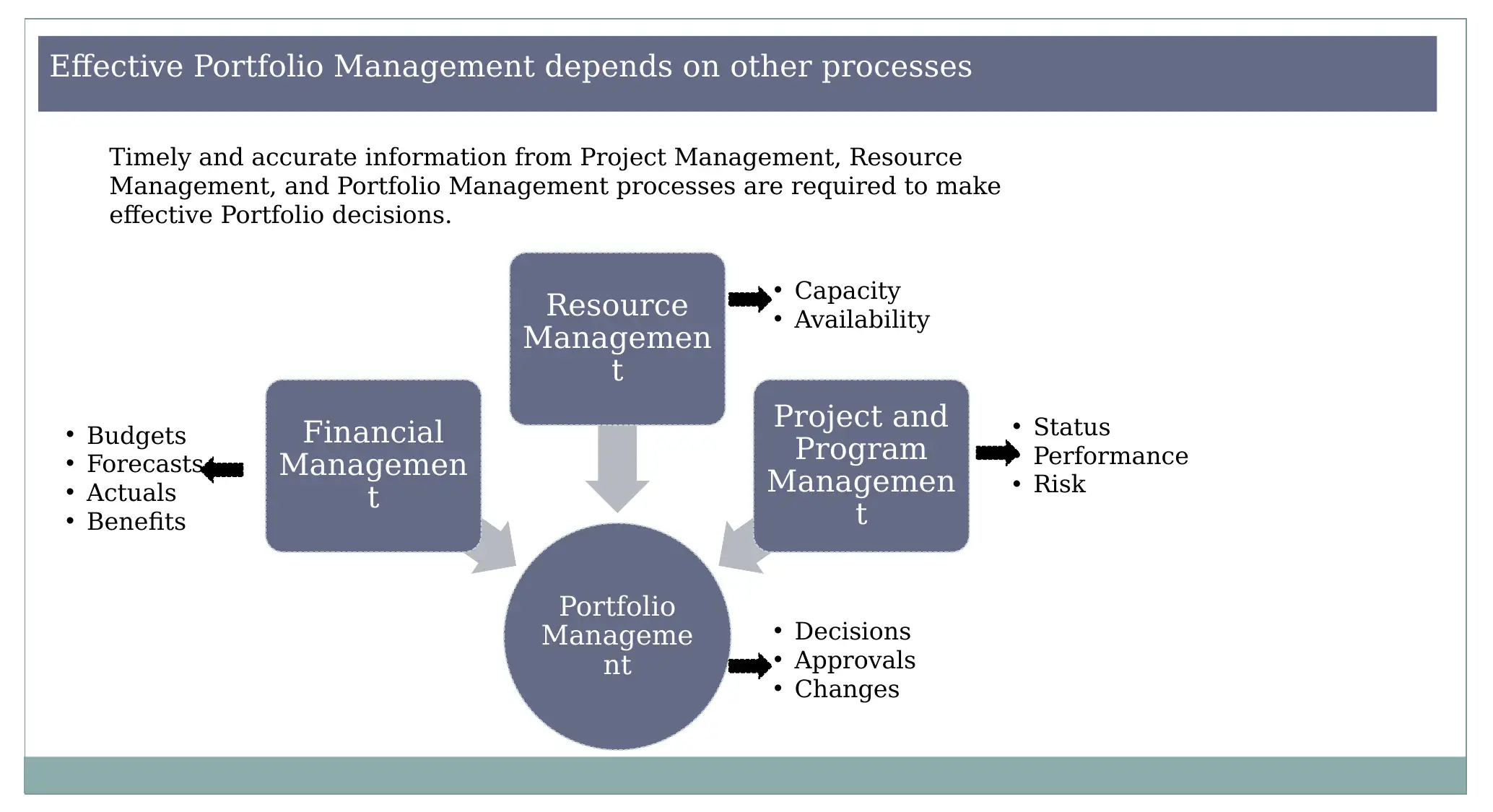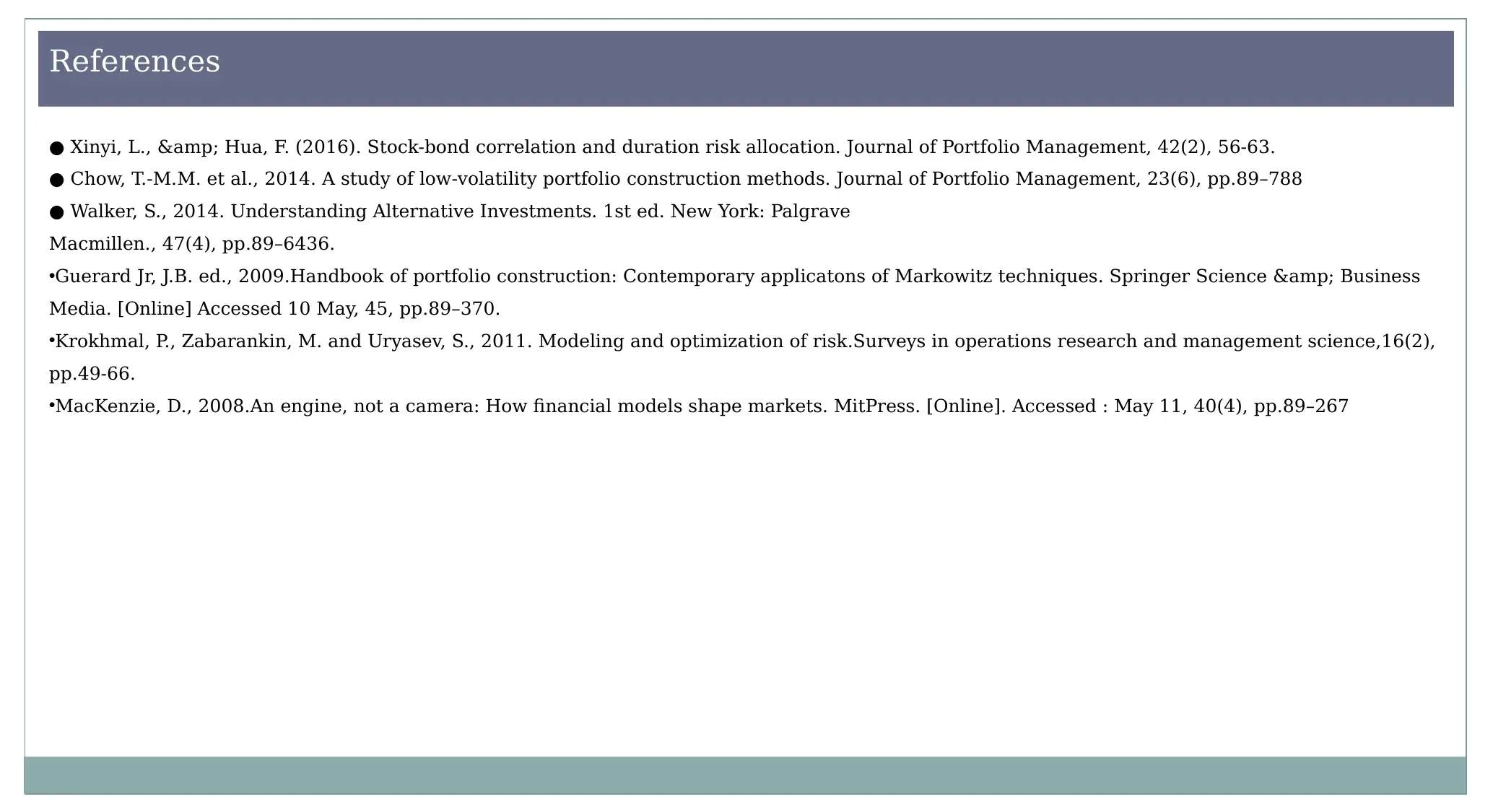This presentation covers the essential processes in portfolio management, including establishing portfolio standards, defining your strategic portfolio, evaluating your portfolio, and improving portfolio performance. It also discusses how to make smarter portfolio decisions about investment mix, project selection, timing, execution, sourcing, performance, and anticipated outcomes. The presentation includes eight key processes involved in choosing the right portfolio, enablers, and how to determine which projects will make the list. It also covers how to improve portfolio performance and the processes that effective portfolio management depends on. The presentation is relevant to Applied Portfolio Management courses in any college or university.
![[object Object]](/_next/static/media/star-bottom.7253800d.svg)
![[object Object]](/_next/static/media/star-bottom.7253800d.svg)
